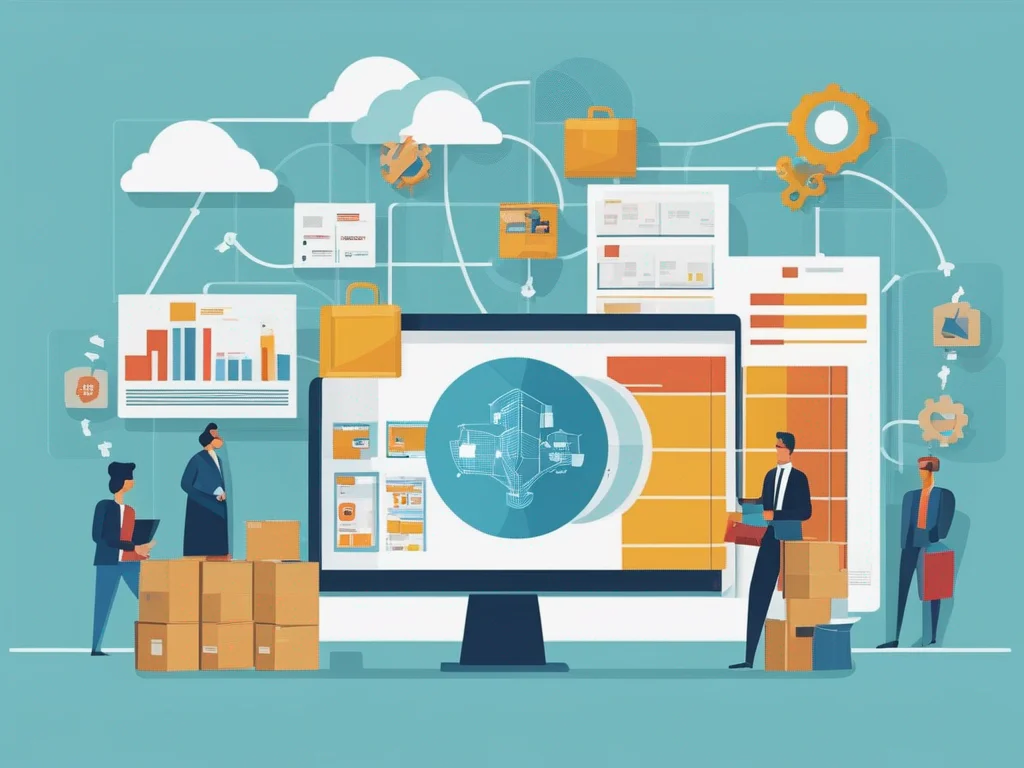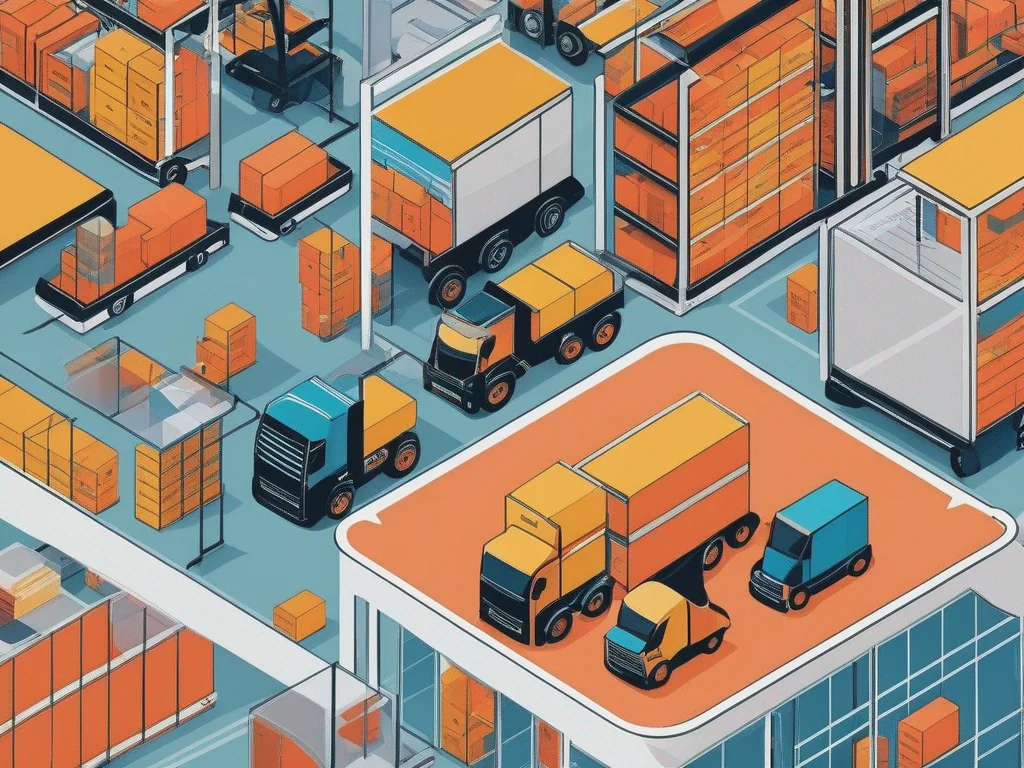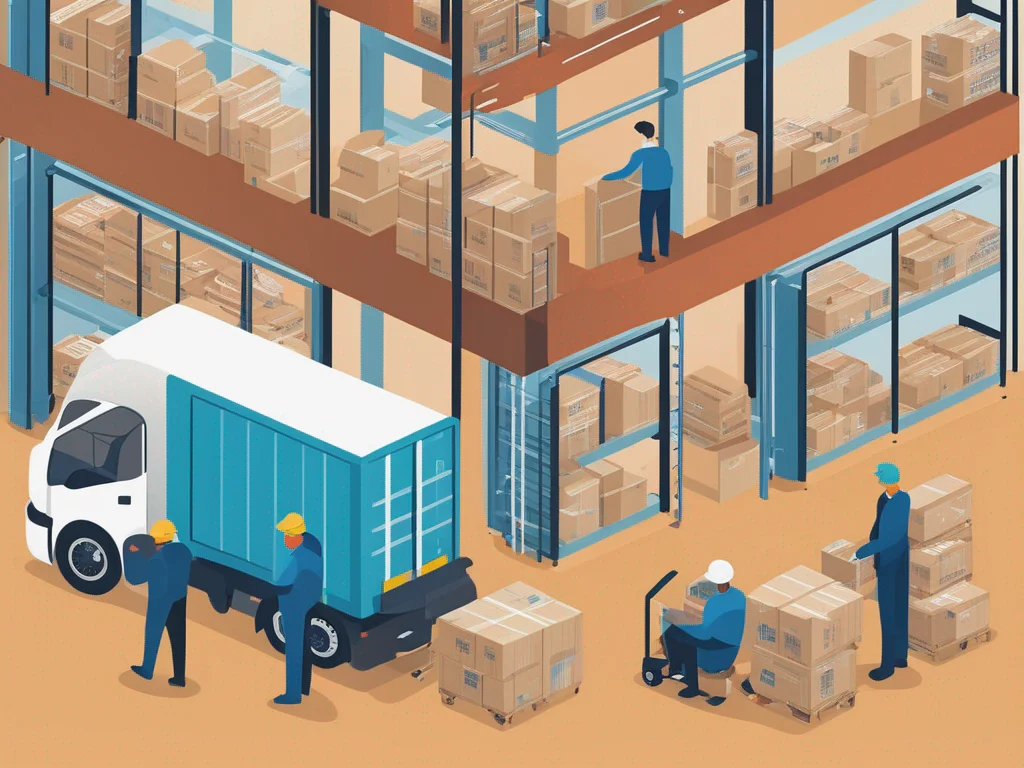Supply chain management is ripe for disruption by artificial intelligence. As supply networks grow more complex and global, AI In Supply Chain Management is emerging as a force multiplier for enhanced planning, visibility, resilience, and automation across modern supply chains.
In this comprehensive guide, we’ll explore the pivotal role AI is playing in supply chain digital transformation and how leading organizations are putting these technologies into practice.
The Supply Chain Process
To understand where AI can drive impact, let’s briefly review the key stages of the supply chain process:
Procurement – Sourcing and procuring raw materials and components from suppliers. AI can automate supplier discovery, bidding, and contracting.
Manufacturing & Assembly – Transforming raw materials into finished products. AI optimizes production scheduling, quality control, and maintenance.
Warehousing & Inventory – Safely storing and managing inventory. AI enables efficient picking and stock-level optimization.
Transportation & Logistics – Moving and delivering products to customers. AI plans optimal delivery routes and tracks shipments.
Reverse Logistics – Returns, repairs, and recall management. AI predicts return rates and optimizes reverse logistics.
While linear in theory, modern supply chains involve many interconnections, feedback loops, and partners. AI helps manage this intricacy.

Key Benefits of AI in Supply Chain
Adopting AI across supply chain processes delivers manifold benefits:
Enhanced visibility – AI aggregates data across disparate systems to provide comprehensive visibility into suppliers, inventory, shipments, delays, disruptions, etc.
Improved planning – With its analytical capabilities, AI enables better demand forecasting, risk assessment, and predictive analytics.
Increased automation – AI and smart robotics automate repetitive manual tasks resulting in greater efficiency, consistency, and productivity.
Continuous optimization – Machine learning models constantly analyze data and iterate to improve supply chain planning and decision-making over time.
Reduced costs – AI optimization minimizes expenditures associated with inventory, manufacturing, logistics, and sourcing.
Greater agility – With full visibility and predictive insights, supply chains can sense changes and rapidly adapt. This builds resilience.
Taken together, these benefits allow enterprises to construct intelligent, optimized supply networks.
AI for Enhanced Supply Chain Visibility
One of AI’s biggest contributions is providing integrated visibility where traditional supply chains obscured data in silos and spreadsheets.
Supply Chain Control Towers
Control towers powered by AI consolidate and analyze live data from IoT sensors, ERP systems, logistics providers, and more into a unified view. Machine learning detects important patterns, while intelligent agents issue alerts and recommendations. This enables real-time monitoring and nimble responses.
Shipment Tracking and Monitoring
Computer vision applied to data from cameras and drones can automatically track supply vehicles and shipments. ML also leverages streaming sensor data to continuously monitor shipment conditions like temperature, shock, humidity, and location. This allows for assessing shipment integrity and estimated time of arrival.
Supply Chain Mapping
Next-generation mapping solutions like FourKites leverage machine learning graph algorithms to map multi-tier supply networks including flows between facilities, transportation channels, and points of distribution. This provides end-to-end visibility spanning organizations and partners.
In summary, AI solutions integrate siloed data sources to help resolve the perennial supply chain visibility challenge that breeds inefficiencies.
Predictive Analytics for Intelligent Planning
Beyond just monitoring the present, AI’s pattern recognition capabilities also enable smarter planning for the future.

Demand Forecasting
Highly accurate demand forecasting allows efficient alignment of production, inventory, and workforce levels with expected customer demand. Statistical learning and deep neural network models can assimilate many internal and external signals including past demand, seasonal trends, promotions, competitor activity, market conditions, and even weather to generate reliable demand predictions.
Risk Modeling and Simulation
Machine learning algorithms can continuously analyze data to model probabilistic risks from supply disruptions, delivery delays, material shortages, geopolitical events, and more. Scenario analysis evaluates mitigation actions like diversifying suppliers, adjusting safety stock, and building redundancy. This empowers preemptive risk management.
Dynamic Replenishment Optimization
AI tools can dynamically recalculate optimal inventory reorder points and safety stock levels on an ongoing basis considering changing demand forecasts, lead times, and supply variability. This keeps inventory lean and flexible.
In summary, AI predictive analytics enable organizations to anticipate changes before they occur and recalibrate supply chain plans accordingly. This drives major efficiency gains while bolstering resilience.
Why is it important for companies to invest in building a complete data and analytics platform?
Intelligent Process Automation with AI
Beyond insight and planning, AI also automates tactical supply chain processes to improve labor productivity, speed, accuracy, and consistency:
Procurement Automation
AI-driven bots can autonomously gather and compile supplier data for requests for proposals, tenders, and contracts. This accelerates historically manual sourcing activities. AI can also intelligently match buyers and suppliers based on their profiles, capabilities, constraints, and objectives.
Warehouse Automation
Computer vision systems can direct autonomous robots to efficiently pick, pack, sort, and move inventory inside warehouses and fulfillment centers. This reduces reliance on error-prone manual labor. AI also optimizes warehouse layouts and designs automated storage and retrieval systems.
Manufacturing Optimization
Industrial IoT sensors and machine learning algorithms enable predictive maintenance by monitoring equipment telemetry to predict failures before they occur. AI also adapts production schedules and machinery settings in real time to account for variability in raw material properties.
Logistics Optimization
AI programs plan optimal delivery routes and mode selection considering traffic patterns, vehicle capacity, weather, road conditions, and commercial priorities. This reduces mileage and costs. Automated warehouses also enable faster load and unload times.
In summary, infusing tactical supply chain processes with AI enhances efficiency, speed, accuracy, and consistency. This unburdens employees from repetitive tasks to focus on higher judgment priorities.
Real-World AI Use Cases
Leading enterprises across industries are already realizing benefits from implementing AI supply chain solutions:

Amazon
The e-commerce giant applies AI across fulfillment and logistics including anticipatory demand forecasting, automated inventory replenishment, robotic process automation in warehouses, delivery routing optimization, predictive maintenance on production equipment, and dynamic pricing. This allows remarkable speed and accuracy at scale.
Airbus
The aerospace manufacturer uses AI to assess part inventories across its multi-tier production network. Machine learning integrates various signals to predict upcoming aircraft demand to optimize the timely availability of required components.
Flextronics
This major electronics contract manufacturer trained computer vision algorithms to identify and troubleshoot defects in circuit boards to reduce manufacturing errors and waste.
Coca Cola
AI algorithms crunch retail sales data, weather forecasts, event schedules, and social media to fine-tune demand predictions. This allows for optimizing production scheduling and pre-stocking to minimize waste.
UPS
The logistics leader employs ORION, an advanced analytics platform, to make approximately 150,000 daily adjustments to delivery routes optimizing efficiency. AI also powers package tracking, sensor monitoring in transit, and predictive maintenance analytics across the UPS fleet.
These examples demonstrate AI’s flexible adaptability to transform supply chain visibility, planning, and automation in diverse industries.
Challenges in Adopting AI Supply Chain Solutions
However, significant barriers remain in deploying AI supply chain systems:
Integration difficulties – Many organizations rely on fragmented legacy enterprise systems that prove difficult to consolidate for AI platforms.
Lack of quality data – Machine learning models require large volumes of high-quality training data that may not readily exist.
Change management hurdles – Cultural resistance, lack of alignment to user workflows, and insufficient skill sets impede the adoption of AI tools.
Unproven ROI – Since AI supply chain products are relatively new, demonstrating return on investment against traditional methods can be difficult initially.
Ethical concerns – Questions around data transparency, integrity, accountability, and bias in AI systems require careful mitigation.
With deliberate change management and skills development, organizations can overcome these hurdles to successfully incorporate AI solutions tailored to their supply chain needs and readiness.
Emerging Innovations in AI-Enabled Supply Chains
The supply chain AI market is forecast to grow over 20% annually, signaling major innovations still ahead:

Predictive maintenance – Increased sensor instrumentation will enable AI to anticipate equipment failures and trigger preemptive maintenance. This minimizes downtime.
Automated contracting – AI negotiation agents will be able to autonomously handle supplier contracts, freight agreements, and logistics service engagements to optimize terms.
Digital twin modeling – Detailed virtual models of supply networks will simulate scenarios and test optimization strategies before real-world implementation.
Supply chain finance – AI will optimize cash flow, credit, and financing based on supply chain data to better manage working capital across parties.
Sustainable supply chains – AI will help model the carbon footprint tradeoffs of different supply chain design and transportation decisions allowing sustainability optimization.
Distributed ledger integration – Blockchain smart contracts will exchange key supply chain data and execute end-to-end transactions automatically when conditions are met.
The convergence of AI, IoT, robotics, and other Industry 4.0 technologies foreshadows the rise of agile, self-optimizing supply networks. However, focusing AI on incrementally enhancing existing processes brings faster returns than radical transformation.
Recommended Initial AI Implementations
Based on proven high-impact use cases, here are some recommended starting points for applying AI in supply chains:
- Leverage machine learning for demand forecasting to improve production and inventory planning.
- Implement computer vision and smart robotics for warehouse and logistics automation to enhance efficiency.
- Apply predictive analytics to anticipate and mitigate equipment maintenance needs and supply chain disruptions.
- Aggregate data across enterprise systems into a digital supply chain twin for end-to-end visibility.
- Monitor logistic asset conditions with IoT sensors and AI to ensure product integrity in transit.
Moving from isolated AI proofs of concept to integrated solutions that improve daily operations is critical for driving transformational value.
Key Takeaways
The key conclusions from our in-depth exploration of AI in the supply chain:
- AI provides comprehensive visibility into fragmented supply chain data, unlocking game-changing insights.
- Machine learning enables superior demand forecasting, risk management, and decision optimization.
- Intelligent automation of tactical supply chain processes dramatically improves productivity.
- Leading organizations across industries are already achieving measurable benefits from AI supply chain adoption.
- However, integrating AI into legacy environments remains challenging and requires overcoming cultural and technical hurdles.
- Looking ahead, innovations in IoT, digital twin modeling, and distributed ledgers will expand AI capabilities even further.
- Focusing AI on high-impact steps like planning and warehousing drives near-term value.
Rather than a far-off vision, AI supply chain solutions are maturing into practical tools delivering real competitive advantage to enterprises. Adopting AI today lays the foundations for fully optimized autonomous supply networks ahead.
Conclusion
AI represents a paradigm-shifting opportunity to transform rigid 20th-century supply chains into intelligent, responsive ecosystems ready for modern demands. Enterprises proficient in applying AI will gain a tremendous competitive edge. However, a deliberate, focused approach tailored to incremental enhancements provides the most value.
One Response